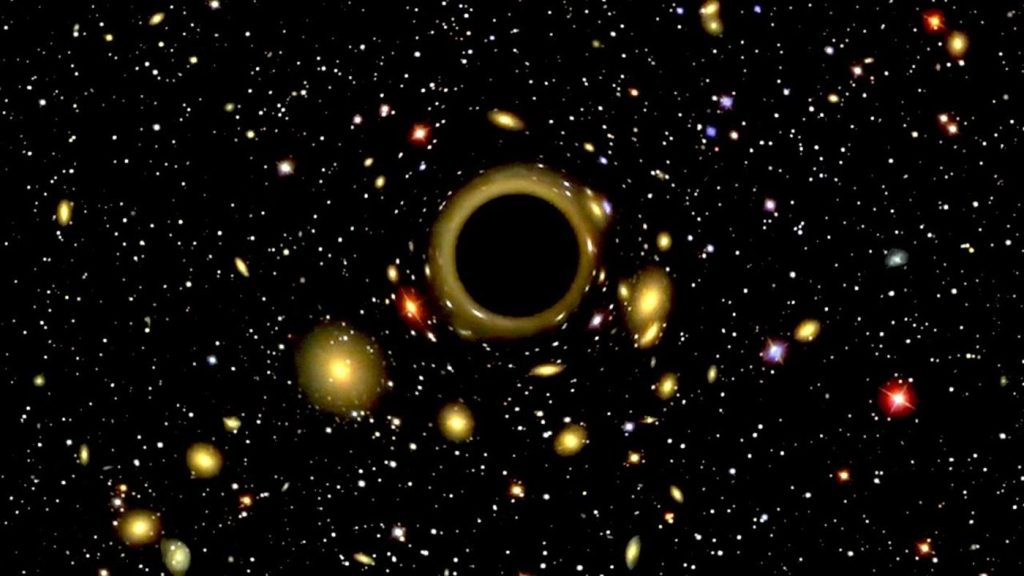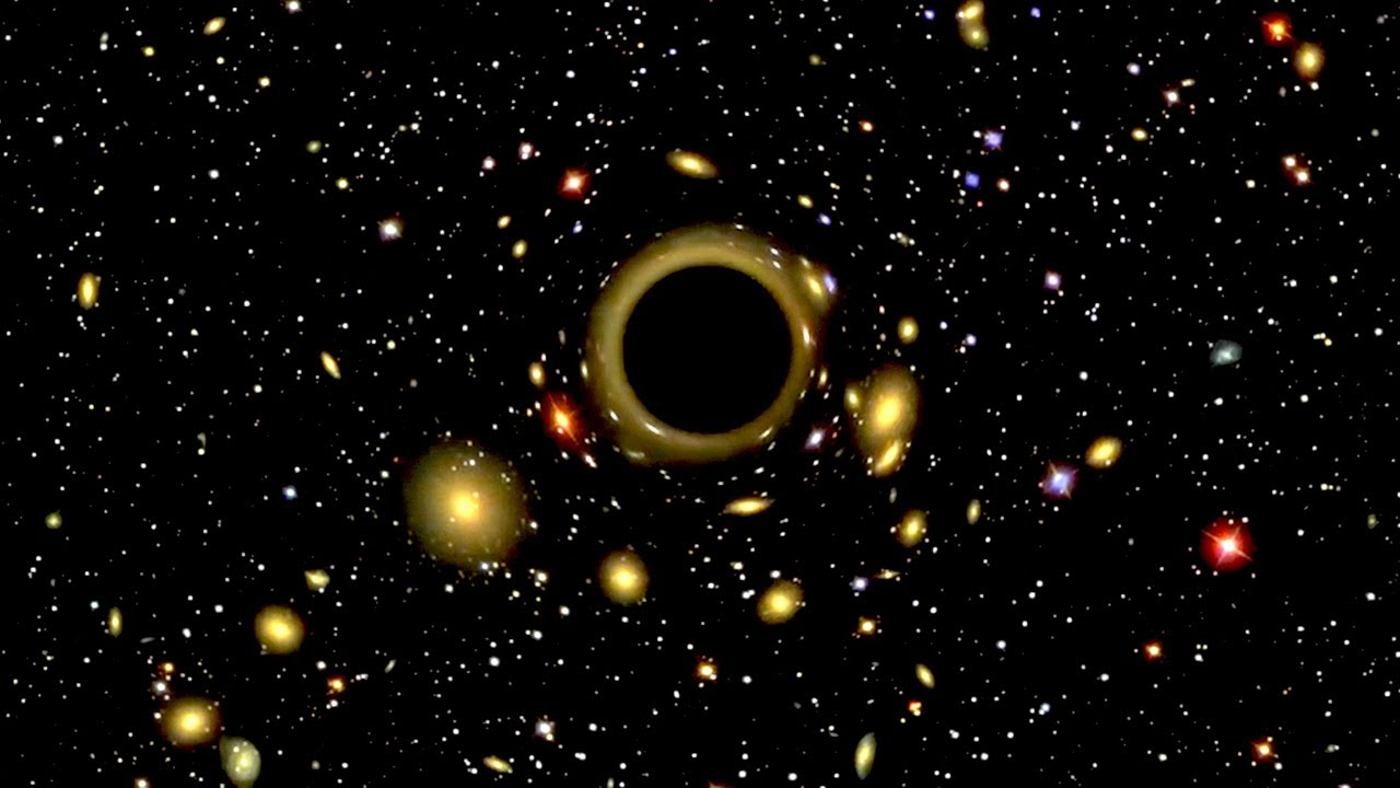
If, as astronomers believe, the death of large stars leave behind black holes, there should be hundreds of millions of them scattered throughout the Milky Way galaxy. The problem is, isolated black holes are invisible.
Now, a team led by University of California, Berkeley, astronomers has for the first time discovered what may be a free-floating black hole by observing the brightening of a more distant star as its light was distorted by the object’s strong gravitational field—so-called gravitational microlensing.
The team, led by graduate student Casey Lam and Jessica Lu, a UC Berkeley associate professor of astronomy, estimates that the mass of the invisible compact object is between 1.6 and 4.4 times that of the sun. Because astronomers think that the leftover remnant of a dead star must be heavier than 2.2 solar masses in order to collapse to a black hole, the UC Berkeley researchers caution that the object could be a neutron star instead of a black hole. Neutron stars are also dense, highly compact objects, but their gravity is balanced by internal neutron pressure, which prevents further collapse to a black hole.
Whether a black hole or a neutron star, the object is the first dark stellar remnant — a stellar “ghost”—discovered wandering through the galaxy unpaired with another star.
“This is the first free-floating black hole or neutron star discovered with gravitational microlensing,” Lu said. “With microlensing, we’re able to probe these lonely, compact objects and weigh them. I think we have opened a new window onto these dark objects, which can’t be seen any other way.”
MORE: Don’t Miss Celestial Show as Five Planets Align With the Moon for All to See
Determining how many of these compact objects populate the Milky Way galaxy will help astronomers understand the evolution of stars—in particular, how they die—and of our galaxy, and perhaps reveal whether any of the unseen black holes are primordial black holes, which some cosmologists think were produced in large quantities during the Big Bang.
The analysis by Lam, Lu and their international team has been accepted for publication in The Astrophysical Journal Letters.
RELATED: Ice May Be Hiding in Ancient Moon Volcanoes
The analysis includes four other microlensing events that the team concluded were not caused by a black hole, though two were likely caused by a white dwarf or a neutron star. The team also concluded that the likely population of black holes in the galaxy is 200 million—about what most theorists predicted.
Same data, different conclusions
Notably, a competing team from the Space Telescope Science Institute (STScI) in Baltimore analyzed the same microlensing event and claims that the mass of the compact object is closer to 7.1 solar masses and indisputably a black hole. A paper describing the analysis by the STScI team, led by Kailash Sahu, has been accepted for publication in The Astrophysical Journal.
(WATCH the video for this story below.)
Source: University of California, Berkeley
SHARE This ‘Out There’ News With Pals…




















